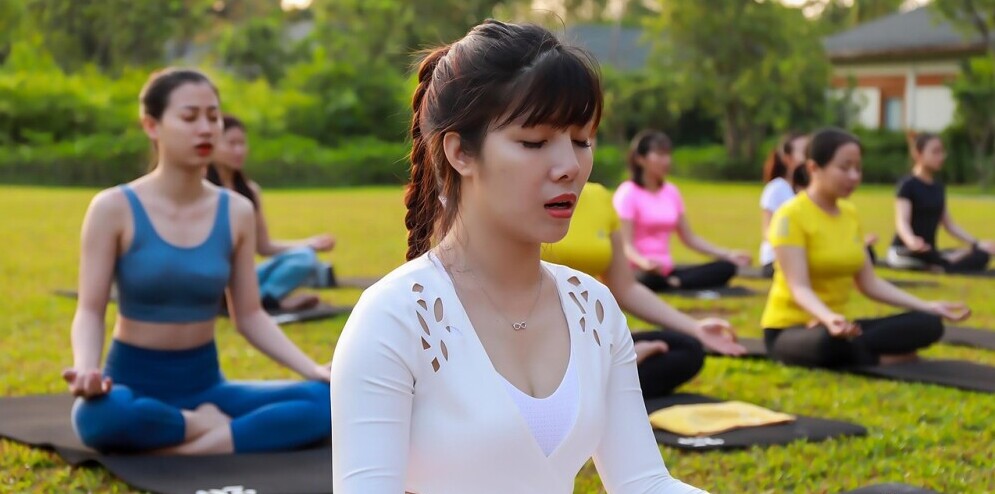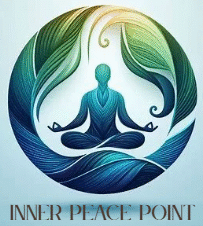
Anxiety often feels like an unwelcome guest that won’t leave. It messes with your peace and can take a serious toll on your mental health. But what exactly is it? Basically, it’s your brain’s way of reacting to stress and alerting you about potential danger, even when there isn’t any. While it’s normal to feel anxious from time to time, chronic anxiety can interfere with your daily life—and that’s where meditation can come in handy.
Meditation is this super old practice, used for centuries to help people chill out and find some calm in their hectic lives. Imagine it as a time-out for your brain, a moment of quiet in the noise of everyday life. It’s not just about sitting still; it’s about reconnecting with yourself and finding a way to manage those racing thoughts.
Research over the years has backed up what many have known all along—meditation is packed with perks for both your brain and body. Studies show it can actually help reduce symptoms of anxiety and stress. It’s all about reshaping how your brain reacts to stressors, helping you build resilience over time.
The magic of meditation lies in what’s known as the mind-body connection. You see, your thoughts and emotions are closely linked to your physical well-being. When you meditate, you’re not just soothing your mind; you’re also helping your body relax, lowering your heart rate and blood pressure. It sounds pretty cool, right?

Getting Started: How to Begin Meditating for Anxiety Relief
Starting a meditation practice can feel a bit like awkward first steps, but I’m here to help you get going. It’s simpler than you might think, and can make a huge difference in dealing with anxiety.
To start, find a quiet space where you won’t be disturbed. Sit comfortably—whether that’s cross-legged on a cushion or upright in a chair. It’s important to keep your back straight, but stay relaxed. You don’t need any fancy gear to get started. Just yourself, and maybe a timer on your phone.
Set a time limit. If you’re just starting out, even five to ten minutes is perfect. Use an app, or simply your phone’s timer, to avoid getting too caught up in the clock. This allows you to focus on the experience rather than worrying how long it’s taking.
Focus on your breath. Inhale through your nose, hold it for a moment, then exhale slowly through your mouth. This controls your chaotic thoughts, zoning in on what’s happening right now—no past, no future, just you and your breath.
Sometimes, your mind will wander, and that’s okay. When that happens, gently bring your focus back to your breathing. This process of losing focus and gently guiding it back is actually helping you train your mind—kind of like a mental gym workout.
One common hurdle is those distracting thoughts, especially when starting out. Don’t fight them. Instead, acknowledge them, then let them drift away softly, like clouds moving across the sky. It’s all about patience with yourself.
You might wonder where the perfect meditation spot is—honestly, anywhere with minimal distractions will do. A corner of your bedroom, a park bench, or even a spot in your living room can work wonders. The key is consistency and practice.
Starting meditation is a step towards managing anxiety, providing a peaceful break in today’s nonstop world. Remember, it’s a skill you build over time.
Exploring Meditation Techniques: What Works Best for Anxiety?
When it comes to meditation for anxiety, there’s no one-size-fits-all. It’s more like a buffet; you get to try different things and find what suits your vibe. Let’s break down some options that have helped many tackle anxiety.
Mindfulness meditation is a fantastic starting point. It’s all about being present, not letting your mind wander to stress about the past or worry about the future. You focus on the now, observing your thoughts without judgment. It’s effective because it helps ground you, reducing anxiety much sooner than you’d think.
Guided meditation can also be your go-to, especially if you prefer a little guidance as you’re starting out. Apps like Calm and Headspace offer sessions led by experienced instructors who guide you through the process, often with soothing soundscapes. It’s like having a meditation coach in your pocket.
Then there’s transcendental meditation, which involves silently repeating a specific mantra in your mind. It’s like focusing on a rhythm that helps ease tension in your mind and body. While it might sound more structured, many people find it deeply relaxing and stress-relieving.
Heard of the ‘3 3 3 rule’ for anxiety? It’s both simple and powerful, like a quick reset button for your brain. You look around and name three things you see. Next, identify three sounds you hear. Finally, move three parts of your body—tap your fingers, wiggle your toes, or shrug your shoulders. It grounds you in the moment, pushing anxiety to the sidelines.
Finding the right meditation technique is like finding your favorite song. Give them a try, mix things up a bit, and see what resonates. Anything that makes you feel like you’re reclaiming some peace of mind is a win in my book.

Time and Commitment: How Long Should You Meditate to Reduce Anxiety?
Setting aside time for meditation can sometimes feel like fitting a new piece into your already busy puzzle. But trust me, it doesn’t have to be overwhelming. The key lies in finding a balance that works for you and sticking to it, like forming any other healthy habit.
How long should you actually meditate to feel the benefits? Experts suggest aiming for about 20 minutes a day, if possible. It’s a sweet spot that’s effective for calming the mind and reducing anxiety. But hey, if that feels like too much at first, start smaller. Even just 5–10 minutes can make a noticeable difference.
Consistency trumps all. Think of meditation like brushing your teeth. It’s not about a marathon session—it’s the regular, everyday practice that keeps things in check. Building meditation into your daily routine, even if it’s for short periods initially, can lead to more profound, long-term benefits.
Frequency is crucial, too. Daily meditation helps create a rhythm. Over time, it can build a stronger defense against anxiety. It’s all about regular practice, not perfection, and realizing that each session is a step in the right direction.
Remember, the journey of meditation is unique to each person. Some might find peace quickly, while others might take a little longer. Start with what’s comfortable, and gradually, you can extend your sessions as you settle into the practice. Ultimately, it’s about prioritizing your well-being and finding what fits your life best.

Integrating Meditation into Your Daily Routine
Fitting meditation into your daily routine can sometimes feel like finding an extra hour in a day that never seems to slow down, but it’s easier than you think. It’s all about weaving it into the fabric of your daily life, making it as habitual as your morning coffee.
Start by picking a time that makes sense for you. Mornings can be great for some, setting a peaceful tone for the day ahead. Others might find evenings more fitting, a way to unwind from a busy day. Test different times and see what feels natural.
Look for mini-moments throughout the day to practice mindfulness. Even a few mindful breaths while you’re waiting for your coffee to brew can calm the chaos. These short bursts of meditation can be surprisingly effective in maintaining a sense of calm and balance.
Mindfulness isn’t just for meditation time. Start integrating it into everyday tasks like eating or walking. Pay attention to the flavors and textures when you eat, or the rhythm of your footsteps. These small mindful acts can enhance the practice beyond the meditation cushion.
Staying consistent helps create a lasting habit. Setting reminders or using apps can provide a gentle nudge. Some even find a meditation buddy useful, making it a shared experience that boosts accountability.
Exploring resources can be a huge help. From books and apps to online communities, these tools offer a wealth of guided sessions and support, keeping your practice fresh and engaging.
Ultimately, the goal is to tailor meditation to fit your lifestyle, not the other way around. It’s all about finding those little opportunities to connect with yourself, even amidst the busyness of life.
